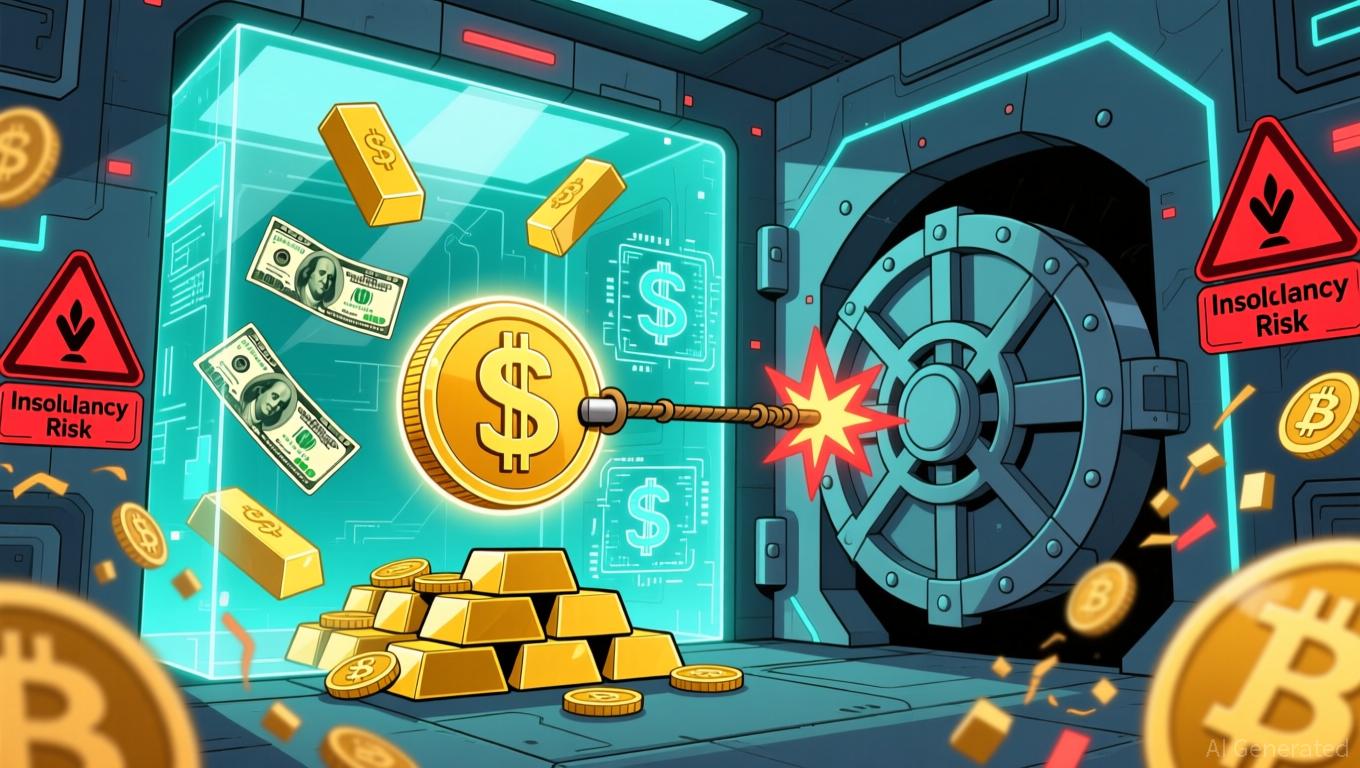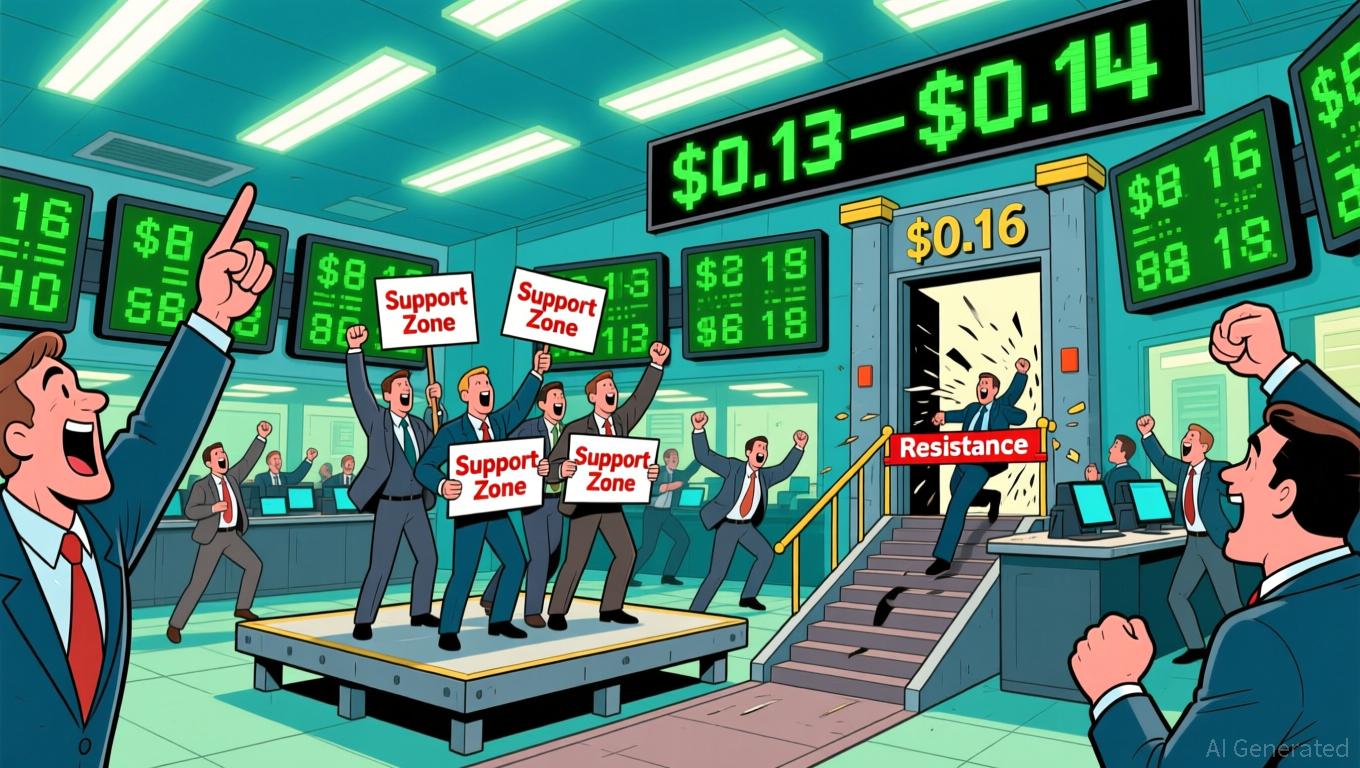Bitcoin Updates: IMF Warns of Widespread Risks Amid Growing Popularity of Tokenized Finance
- IMF highlights tokenized finance's efficiency gains but warns of systemic risks like smart contract interdependencies and liquidity vulnerabilities. - Upcoming Chainlink ETFs signal growing institutional adoption, with Grayscale and Bitwise advancing regulated exposure to $100B+ oracle network assets. - Analysts predict over 100 new crypto ETFs in six months, but XRP's 18% price drop underscores market volatility despite regulatory approvals. - IMF anticipates regulatory frameworks to address cross-platf
IMF Examines the Rise and Risks of Tokenized Finance
The International Monetary Fund (IMF) has published an in-depth report on the expanding field of tokenized finance, emphasizing both its disruptive potential and the systemic challenges it introduces as adoption accelerates worldwide. The IMF points to notable benefits of blockchain-driven systems, such as quicker settlements, lower transaction fees, and broader financial inclusion. However, the organization also highlights significant concerns, including the interconnectedness of smart contracts, fragmentation across platforms, and the possibility of liquidity shortages during periods of market stress.
Institutional Embrace of Tokenized Assets
Momentum in the U.S. market reflects growing institutional interest in tokenized products. Both Grayscale Investments and Bitwise Asset Management have submitted applications for spot Chainlink exchange-traded funds (ETFs). Notably, Bitwise’s ETF appeared on the Depository Trust and Clearing Corporation (DTCC) registry in November 2025, a move that often signals imminent regulatory consideration. Grayscale is also transitioning its Chainlink Trust into an ETF, which will be listed on NYSE Arca under the ticker GLNK. This initiative aims to provide investors with regulated access to Chainlink’s oracle network, which currently secures assets exceeding $100 billion across various blockchains.
Industry analysts, including Bloomberg’s Eric Balchunas and James Seyffart, have described these ETF filings as part of a broader surge in crypto investment products. Seyffart anticipates the introduction of over 100 new crypto ETFs in the coming half-year, expanding beyond the established Bitcoin and Ethereum offerings.
Chainlink ETFs and the Evolution of Decentralized Finance
The anticipated debut of Chainlink ETFs aligns with the IMF’s view of tokenized finance as a means to democratize access to decentralized infrastructure. These ETFs allow institutions and advisors to invest in blockchain assets without the need to manage tokens directly, potentially attracting capital inflows similar to those seen with Bitcoin ETFs, which have drawn billions since their approval. Grayscale’s proposal also includes staking rewards through Coinbase Custody, giving investors the opportunity to earn additional returns while contributing to network security. Chainlink’s Proof of Reserve technology, already used to verify holdings for Bitcoin and Ethereum ETFs, may also be applied to LINK ETFs, further enhancing transparency and investor confidence.

Risks and Regulatory Gaps
Despite the promise of greater efficiency, the IMF warns that tokenized markets carry inherent risks. Automated smart contracts can create intricate dependencies, making the system vulnerable to cascading failures if a single component, such as an oracle network, experiences issues. The IMF also points out regulatory shortcomings, especially regarding interoperability between platforms and the availability of emergency liquidity, which could heighten volatility during turbulent periods.
These concerns are reflected in recent market behavior. For example, even after the approval of several XRP and Dogecoin ETFs, XRP’s value has dropped by 18% since early November, highlighting the susceptibility of speculative assets to rapid changes in investor sentiment.
The Path Forward: Regulation and Innovation
The IMF’s findings suggest that government oversight will play a decisive role in shaping the future of tokenized finance. Drawing from historical trends, regulators are expected to introduce frameworks to address systemic vulnerabilities, which may include standardized smart contract protocols, requirements for cross-platform compatibility, and enhanced consumer protections. Such measures could help address the risks identified by the IMF while supporting continued innovation in the sector. The U.S. Securities and Exchange Commission’s evolving approach to crypto ETFs, including faster reviews for certain filings, illustrates a gradual adaptation of regulatory practices to keep pace with technological change.
Looking Ahead: Balancing Growth and Stability
With projections indicating that tokenized assets could reach $600 billion in assets under management by 2030, maintaining equilibrium between innovation and stability will be essential. The IMF’s cautions serve as a reminder that the future success of tokenized finance depends on effective risk controls, transparent oversight, and coordinated regulatory action. The forthcoming launches of Chainlink and other cryptocurrency ETFs will serve as important tests for how markets respond to these evolving challenges and opportunities.
Disclaimer: The content of this article solely reflects the author's opinion and does not represent the platform in any capacity. This article is not intended to serve as a reference for making investment decisions.
You may also like
Bitcoin News Update: S&P Rating Drop Highlights Tether’s Risky Asset Holdings and Lack of Transparency
- S&P downgrades Tether's USDT to "5 (weak)" due to high-risk reserves and transparency gaps. - Tether's 5.6% BTC exposure exceeds overcollateralization margins, risking undercollateralization if prices drop. - CEO dismisses critique as traditional finance bias, claiming no "toxic" assets in reserves. - Regulators intensify scrutiny as stablecoin centralization risks emerge amid $184B USDT circulation. - S&P urges Tether to reduce risky assets and enhance reserve disclosure to rebuild trust.

Dogecoin Latest Updates: Is a Repeat Performance on the Horizon? Holding $0.15 May Signal a 611% Rally for Dogecoin
- Dogecoin (DOGE) stabilized near $0.15 support, triggering historical 611% rally potential to $1 by 2026. - Grayscale's GDOG ETF and pending Bitwise BWOW ETF mark institutional adoption, though initial inflows remain muted. - Technical indicators show mixed momentum with RSI near oversold levels and key resistance at $0.16. - Market remains divided as ETF-driven liquidity and on-chain infrastructure contrast with macroeconomic and regulatory risks.

Turkmenistan’s Approach to Cryptocurrency: Centralized Oversight Amidst a Decentralized Age
- Turkmenistan legalizes crypto trading under strict 2026 regulations, granting state control over exchanges, mining , and custodial services. - Law mandates KYC/AML compliance, bans traditional banks from crypto services, and classifies digital assets into "backed" and "unbacked" categories. - Central bank gains authority to operate state-monitored distributed ledgers, contrasting with decentralized approaches in South Korea and Bhutan. - Framework aims to balance innovation with oversight, testing Turkme
Bitcoin News Update: Has $162 Billion Left Crypto Due to Institutional Buying or a Broader Market Pullback?
- BlackRock deposited 4,198 BTC and 43,237 ETH into Coinbase amid crypto sell-offs, despite $355.5M Bitcoin ETF outflows. - A 1.8M BTC ($162B) overnight exchange withdrawal sparks speculation about institutional accumulation or portfolio rebalancing. - $40B in BTC/ETH exchange inflows and record $51.1B Binance stablecoin reserves highlight institutional demand for regulated crypto products. - On-chain data shows 45% of large deposits (≥100 BTC) and 1.8M BTC withdrawals, indicating mixed market sentiment ah
